
- Introduction: Old is Gold
- Update 1: Veteran services
- Update 2: Geared up
- Update 3: Getting into the groove
- Update 4: Bush Bashin'
- Update 5: Hot Stuff
Introduction: Old is Gold
I WOULD like to say it was love at first sight, but when I first copped a glance of the 1994 Land Rover Defender 300Tdi parked in the Sunshine Coast Airport carpark I was a little tentative.
That’s because I’d just flown from Sydney to purchase the Land Rover on the promise that it “drives beautifully”. I walked around it and saw a body that looked rougher than I’d anticipated.
This Landy had done some work, but it had a roof rack to which was attached an Ironman 4x4 awning, a high-lift jack and a pair of MaxTrax. When I poked my head underneath, there was oil everywhere. This was expected, but it looked like it was coming out of several places including the engine, gearbox, transfer case, diffs and swivel seals.
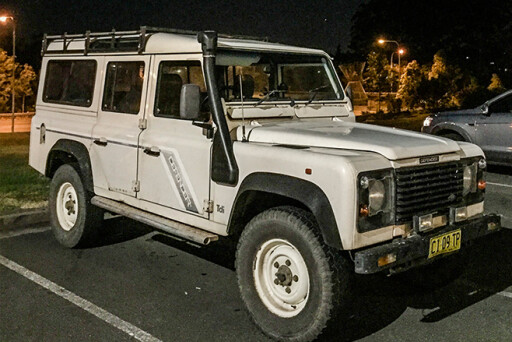
The chassis looked pretty straight, without any visible rust, and there was an Old Man Emu steering damper up front, King springs, unidentifiable aftermarket shocks, and airbags in the rear. Then I opened the driver’s door and noticed the air-conditioning, the three switches for an ARB air compressor, and front and rear Air Lockers. Bonus!
It was pretty dirty in the cabin, but the dash was in good nick, the seats weren’t too bad and this Landy was loaded with extras I didn’t know about, including a UHF and a dual battery set-up. I took it for a spin and the gearbox and clutch felt good, but there was a clunk in the driveline.
The 300Tdi performed as I would’ve hoped, but when the Landy approached 90km/h the steering wheel began to wobble. Nevertheless, it handled well, rode beautifully and the brakes offered plenty of bite – a good sign.
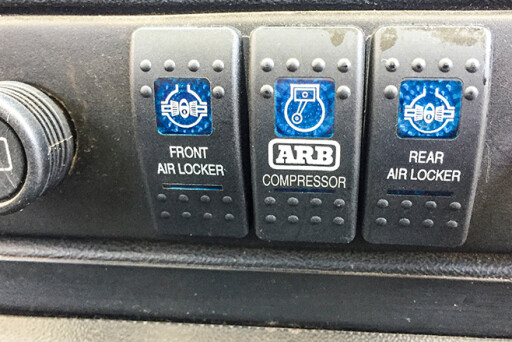
I did the deal and was on the highway heading south by 11.30am with 1200km ahead of me to familiarise myself with my new Landy. I stopped at the first service station to fuel up, check tyres and fluids, as well as stock up on food and drink to fuel me.
A couple of the tyres were a bit iffy, and they were all from different rubber companies, including the spare, but I was confident they would get me home safely. The drive back to Wollongong was enjoyable.
The temperature gauge sat where it should the entire way back and the engine (supposedly rebuilt 70,000km ago) performed faultlessly. The only issues on the journey included a sticking throttle and the aforementioned wobble in the steering, which could be the result of out-of-balance wheels or (so I’m told) dodgy swivel hubs. One of the headlights is also buggered and the window washer is sometimes reluctant to turn off.
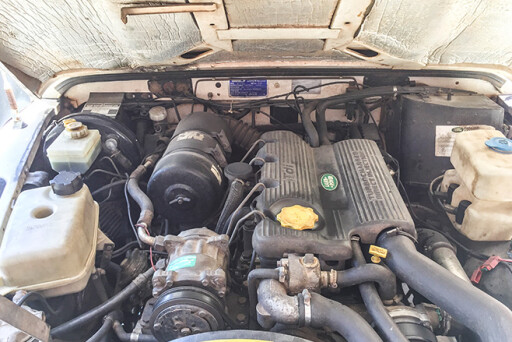
When I arrived back home I discovered the Defender had come with a complete Bahco toolkit, an inverter, a battery charger, some jumper leads, a machete (yes, you read right), and a heap of other tools and bits and pieces. Of course, my once pristine driveway is now covered in oil, but you can’t see it when the Landy is parked over the top. It looks like I have a lot of work ahead of me.
Update 1: Veteran services
Deano’s spent a bucket-load of cash fixing his old Defender

AS MENTIONED a couple of months ago (May, 2017), my recently acquired 1994 Defender 300TDi needed a fair bit of work.
The obvious problems included a big wobble in the steering at highway speeds, a slipping clutch, and oil leaks from every conceivable seal (situation normal, I hear you snigger).
Rather than take it to my local mechanic, I enlisted the services of Pete Davis from Roving Mechanical. Pete, who’s been working on Landies for years, has set up shop with the equally experienced Glen Wickens in the southern Sydney suburb of Peakhurst.
 I left the Landy with Pete for a few days and he had a good look over it before presenting me with a long, long list of items requiring attention.
I left the Landy with Pete for a few days and he had a good look over it before presenting me with a long, long list of items requiring attention.
I expected there would be a fair bit to do, and had factored that into my budget, so I gave Pete the go-ahead to fix the areas of immediate concern, which included a new water pump, new brake fluid reservoir and new silicon intercooler hoses.
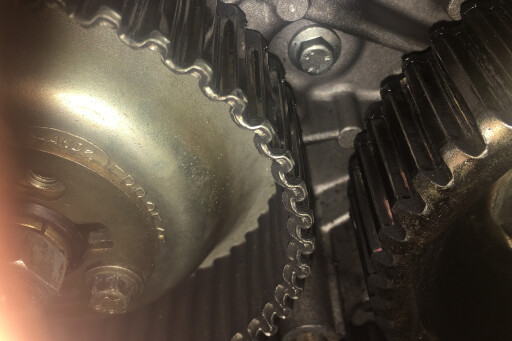 On picking up the Defender, Pete ran me through the rest of the problems that would still have to be fixed: leaking inlet manifold, rear disc shields, wheel bearings, radius rod bushes, Panhard rod bushes, swivel seals, transfer case overhaul, clutch replacement, steering damper, leaking auxiliary fuel tank… you get the idea.
On picking up the Defender, Pete ran me through the rest of the problems that would still have to be fixed: leaking inlet manifold, rear disc shields, wheel bearings, radius rod bushes, Panhard rod bushes, swivel seals, transfer case overhaul, clutch replacement, steering damper, leaking auxiliary fuel tank… you get the idea.
I drove the Defender home and parked it in the garage, with an old carpet underneath to soak up the leaking fluids. A few weeks later I took it back to Pete, where all of the listed work was carried out over a couple of weeks while I was gallivanting about the Flinders Ranges in someone else’s 4x4.
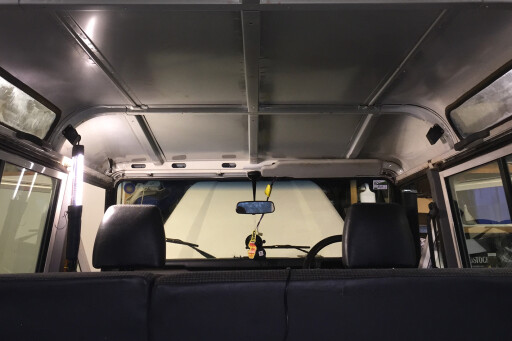 Pete fitted an Xtreme Outback heavy duty clutch from Australian Clutch Services in place of the standard item, and the five mismatched tyres were flicked in favour of a set of BFGoodrich All Terrain T/A KO2s.
Pete fitted an Xtreme Outback heavy duty clutch from Australian Clutch Services in place of the standard item, and the five mismatched tyres were flicked in favour of a set of BFGoodrich All Terrain T/A KO2s.
I have now sampled the KO2s on a couple of different vehicles – up in the Victorian High Country and in the South Australian outback – and I’m a big fan, so I’m looking forward to seeing how they perform in narrow LT235/85R16 spec on the Defender.
When I picked up the Defender once more it felt vastly improved; no more steering wobble, no more slipping clutch and no more oil or fuel leaks (Pete had removed the auxiliary tank so I could get it welded up).
 There was still a knock in the rear-end, which was eventually diagnosed as the rear A-frame bushes. These were replaced on a subsequent visit to Pete and the Defender now drives as it should.
There was still a knock in the rear-end, which was eventually diagnosed as the rear A-frame bushes. These were replaced on a subsequent visit to Pete and the Defender now drives as it should.
Yes, I exceeded my original budget, but not by too much, and now I’m the happy owner of a very capable off-roader, albeit one that doesn’t look all that flash thanks to some bent panels, below average paint and very faded decals. I’ve since removed most of the crappy old window tint, and I’ve ripped out the sagging roof lining.
There’s still a long road ahead for the Defender, but for this project I’m willing to give it all the time it takes.
Update 2: Geared up
Deano starts kitting out his Defender.
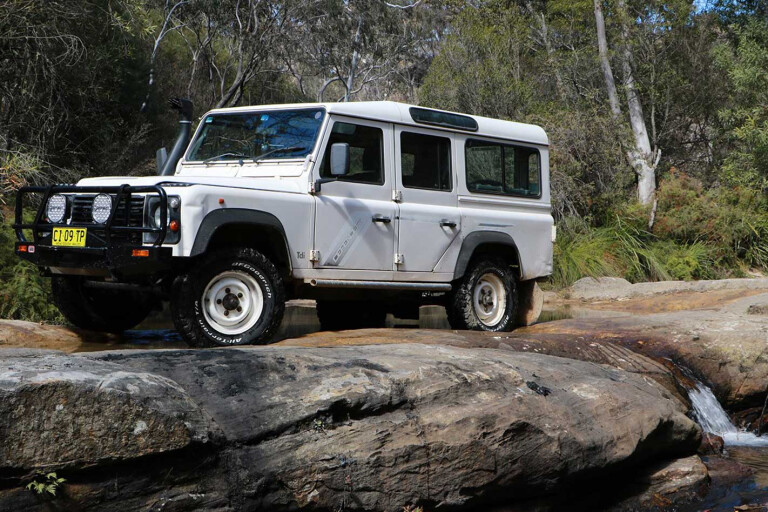
AFTER throwing a heap of money at my old Defender, I reckon it’s finally mechanically sound (knock on wood); although, there are still a few little things to sort out, such as the still-leaking auxiliary fuel tank.
When new, the little 2.5-litre four-cylinder turbo-diesel engine only made a claimed 111hp (83kW), and I reckon a few of those ponies may have got out of the gate in the last 23 years, but on-road performance is still acceptable.
The Defender will happily cruise at 100km/h on the highway and I can even stretch it out to 110 clicks on the freeway, so long as the terrain is flat … or pointing downhill. It struggles a bit on inclines and often needs a shift down to fourth, but I try to leave early for appointments so I’m never in too much of a rush.
The upside of that modest output is excellent fuel economy, the Defender averaging just 10L/100km over the past 1000km. The best thing, however, is how the Defender now rides and handles. There’s minimal play in the steering, ride quality is good and cornering is predictable with well-controlled bodyroll … relative to other Defenders, that is.
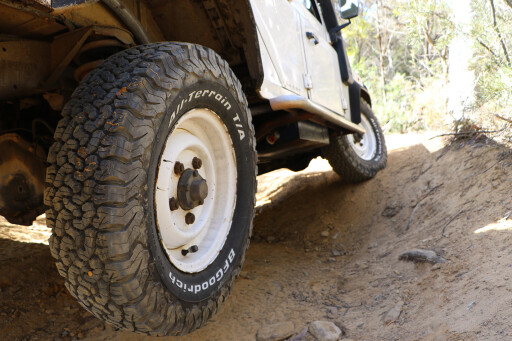 The new Xtreme Outback clutch has bedded in nicely. It offers a progressive feel and is only a little heavier than I remember the old clutch being. To say I’m impressed with the BF Goodrich A/T KO2s would be an understatement, both on sealed and unsealed roads.
The new Xtreme Outback clutch has bedded in nicely. It offers a progressive feel and is only a little heavier than I remember the old clutch being. To say I’m impressed with the BF Goodrich A/T KO2s would be an understatement, both on sealed and unsealed roads.
On the blacktop they offer plenty of grip and are particularly confidence-inspiring in wet weather. Are they quiet? Well, that’s a hard one to answer, but I can assure you they’re barely audible over the wind noise and mechanical cacophony that the Defender generates at highway speeds.
Off-road they bag out nicely with pressures dropped to around 25psi, which you’d expect of a high-profile LT235/85R16. I haven’t had the chance to drive them in muddy conditions as yet, but I’ll let you know how they go as soon as I find out.
As any Defender owner knows, too much chequer plate is never enough, so I was pretty stoked when the oldies bought me a pair of wing-top chequer plates for my birthday. I reckon black highlights on a white vehicle look fantastic, and these plates are no exception.
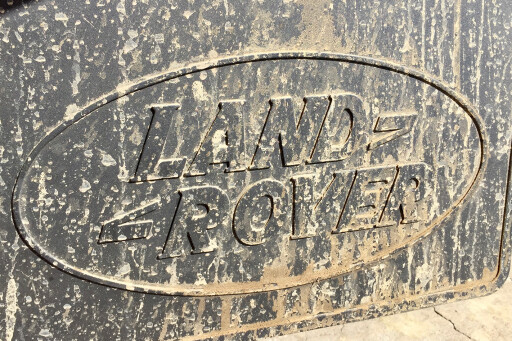 I’ve also spent a fair bit of time trying to remove the worn Defender decals down each side. Using a heat gun, I managed to get the stickers completely off the driver’s side, but there’s still some adhesive residue that won’t budge. I’ve only just started peeling off the stickers on the passenger side. If anyone has any tips on easy decal removal, I’m all ears.
I’ve also spent a fair bit of time trying to remove the worn Defender decals down each side. Using a heat gun, I managed to get the stickers completely off the driver’s side, but there’s still some adhesive residue that won’t budge. I’ve only just started peeling off the stickers on the passenger side. If anyone has any tips on easy decal removal, I’m all ears.
I’ve put some new mud flaps on the back (the old ones went AWOL) and a new catch in one of the sliding rear windows. I sourced these items out of the UK as I struggled to find them locally. My next job was fitting an ARB winch bullbar that I spotted on Gumtree for $750.
I called the seller one morning a couple of weeks ago, whipped up to Sydney (from the ’Gong) to buy the bar, whipped back home and spent the arvo in the shed fitting it. My wife Renata helped me lift the bar into place and the whole job was done in a just a few hours.
This was the second bullbar she’s helped me fit, so I’ll probably have to start paying her soon, but now she’ll have to wait until after I’ve bought a winch (which undoubtedly she’ll also have to help me fit).
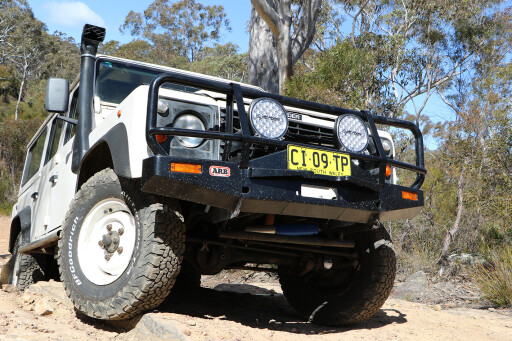 Finally, the Lightforce Genesis LED driving lights I had fitted to my previous vehicle are now on the front of the Defender. Using the supplied Lightforce wiring loom, these lights are easy to wire-up on a regular vehicle, but not so on a Defender, with its battery located under the passenger seat, next to no space between the radiator and the grille, and no access behind the dashboard without first removing it.
Finally, the Lightforce Genesis LED driving lights I had fitted to my previous vehicle are now on the front of the Defender. Using the supplied Lightforce wiring loom, these lights are easy to wire-up on a regular vehicle, but not so on a Defender, with its battery located under the passenger seat, next to no space between the radiator and the grille, and no access behind the dashboard without first removing it.
The Aussie-made Lightforce Genesis driving lights are seriously bright, and will prove a great complement to the yellow glow of the standard halogen headlights … once I get them wired-up properly.
I’ve ordered an Exmoor Trim rear seat from the UK for my daughter to sit in, because the standard seat is hardly what you’d call safe. The stock pew has no headrest and wobbles around on its dodgy-looking mounts. The Exmoor unit mounts securely to the floor of the Defender and has a high back and a headrest.
Another job on the to-do list is to fix the air conditioning, especially now winter is well and truly behind us. I also want to tidy-up the cargo area and make it a little more practical, but for now I’m just enjoying the Defender every time I slip behind the wheel, whether it’s a weekend in the scrub or a drive down to the shops.
4x4 Shed Log 1: 1994 Land Rover Defender 300TDI
Total Mileage: 231,500km
Date Acquired: Feb 2017
Price: $10,000
Mileage this month: 1000km
Average fuel consumption: 10L/100km
Update 3: Getting into the groove
Dean is back with an update on his Defender, after plenty of tinkering and driving.
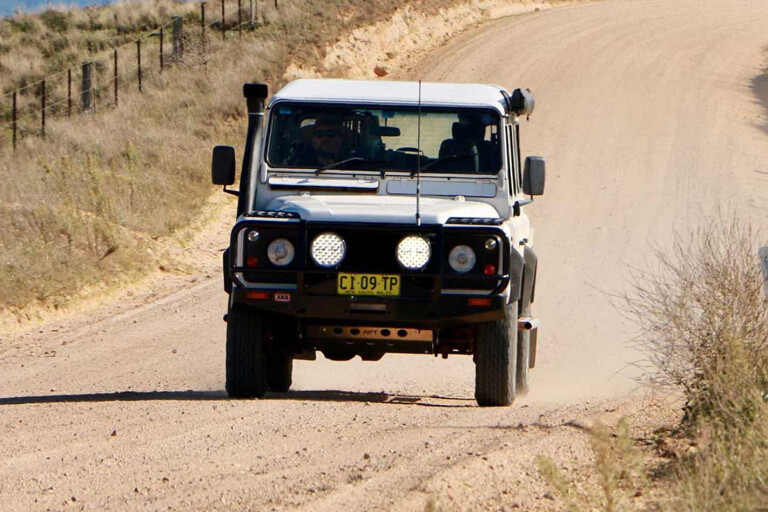
I haven’t written a ‘Shed’ update on my Defender since November last year, and a lot has happened in that time. I’ve tinkered, I’ve driven, I’ve fixed, I’ve driven, I’ve spent, I’ve driven and I’ve spent some more.
Tinkering
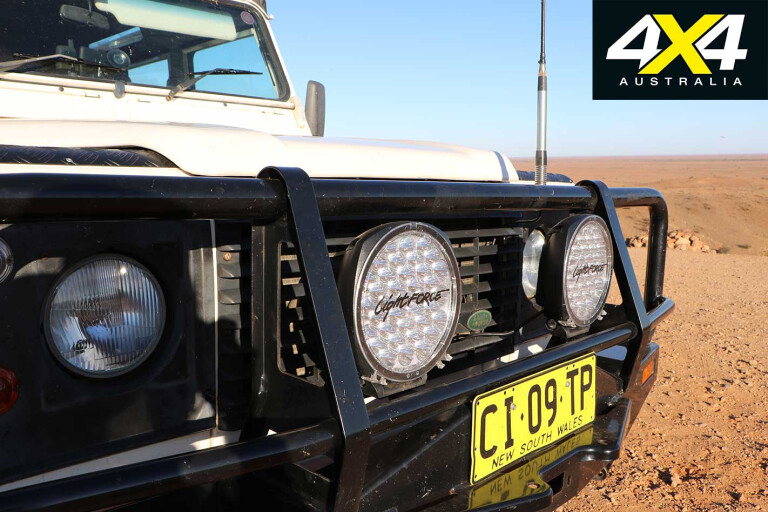
I FITTED a new rear seat manufactured by a company in England called Exmoor Trim. It provides a far more solid base and proper bucket seat comfort for my rear-seat passenger, who deserves something much safer than the rattly, old standard pew.
The Exmoor Trim seat wasn’t cheap (just over $1000) but it’s superbly engineered and nicely made. The old roof lining has gone back in, but not until I stripped it of its saggy, stained material covering. I cleaned off all the old foam, spraypainted it grey, and voila; it looks great and it’ll never sag again.
I’ve upgraded the sound system by fitting a Sony head unit with Apple CarPlay. I initially enlisted the services of a local car audio mob to do this job, but the result was so shoddy I ripped it all out and started again from scratch. I’ve retained the front speakers, fitted some rear speakers in boxes, built a subwoofer box and wired up an old sub and amplifier I used to have fitted in a previous vehicle.
There’s now enough sound to hear a tune at freeway speeds, which is really saying something in an old Defender.
To match the flash new subwoofer box, I decided to tidy up the rear cargo area. To do this I screwed down some marine ply behind the rear seat and attached another piece using hinges; this gives me an under-floor area to stow gear and a nice, flat floor area. It’s all working quite well so far, but I’ll probably fit a drawer down the track.
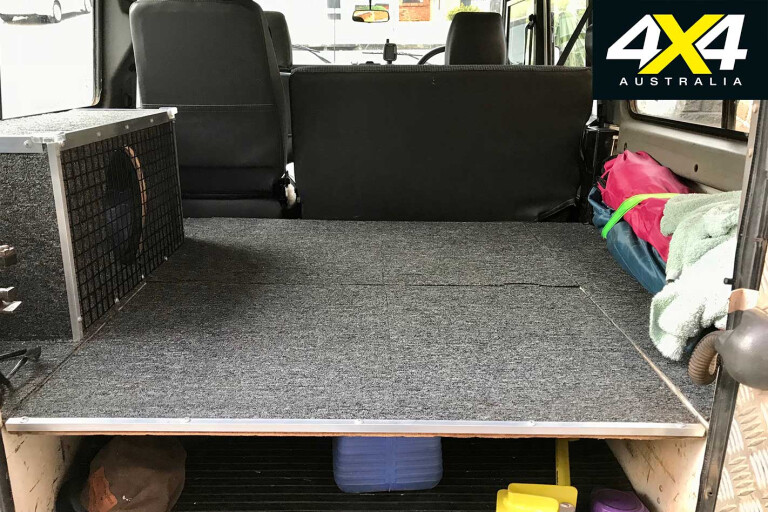
The rear sliding windows were missing a few rivets and were rattling like nothing else, so I drilled out the old rivets and started again. I’d like to eventually flick these sliding windows and replace them with a pair of gull-wings for better access to the cargo area. There are a couple of viable options on the market, including from CSW and Front Runner.
I’ve now wired up a pair of Lightforce Genesis LED driving lights bolted to my second-hand ARB bullbar. These Aussie-made lights are simply awesome, providing a huge throw of light as well as a good spread. They also have a Daytime Running Light (DRL) function, which improves vehicle visibility.
I had to flick the original ‘wombat bar’ when I fitted the ARB bullbar, so I’ve since equipped the Defender with a far more substantial APT alloy steering guard. It looks great and provides much more protection at the front of the Defender. I’ve also fitted a pair of additional rated recovery points.
Fixing
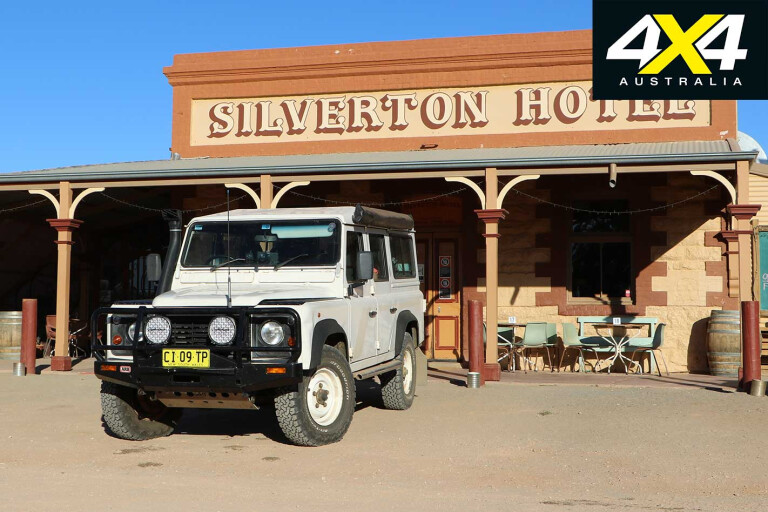
WHEN I bought the Defender I knew it needed a fair bit of work to make it mechanically sound, but I may have underestimated much. So far the crew at Roving Mechanical in Sydney’s south have fitted an Xtreme Outback heavy-duty clutch and replaced or fixed the water pump, brake fluid reservoir, intercooler hoses, inlet manifold gasket, rear disc shields, rear wheel bearings, rear axle ball joint, front radius rod bushes, Panhard bushes, steering damper, rear main seal, hub seal, timing belts, wiper switch, air cleaner mounts, wiper stalk, dipstick and more.
The air-conditioner still doesn’t work, but the fault was located by my local air-con specialist – the bonnet catch has worn a hole through the condenser because, apparently, early model 300Tdi Defenders didn’t have the necessary shield in place to prevent this from happening. It’s an easy enough fix, but I just haven’t got around to it yet.
Of much higher priority is to fix the injector pump, which is leaking a small amount of diesel. At this stage it’s just leaving its mark on my driveway, however, I’ve already booked it in at a diesel specialist for repair.
Driving
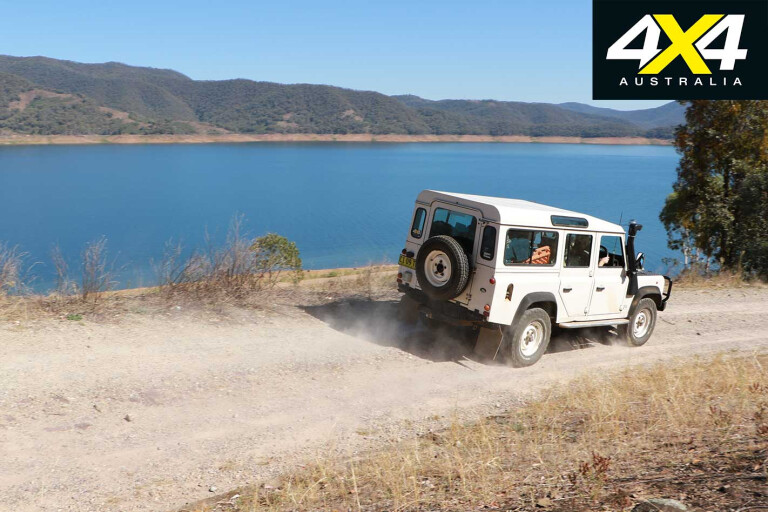
NOW TO the good bit: I just bloody love driving my Defender. It’s noisy, it’s slow, it’s hot in summer and it’s cold in winter; but when I’m behind the wheel, I’m in my happy place.
Since the last update the Defender has done about 12,000km, including a bit of off-roading around the NSW Southern Highlands, a trip out to Eldee Station in outback NSW, a couple of trips down to the Snowy Mountains, and several runs up to Sydney from Wollongong.
The BFGoodrich All Terrain KO2s have covered 10,000km and they’ve performed faultlessly. At this stage they show little in the way of tread wear and there are no visible nicks or cuts in the tread blocks or on the sidewalls, despite a fair bit of off-road work including some rocky tracks in the Barrier Ranges. For the record, I’ve been running 35psi front and rear on the road, dropping to as low as 26psi on dirt.

Off-road, the Defender is probably the most capable vehicle I’ve owned. It has fantastic low-range gearing, excellent axle articulation and, thanks to front and rear ARB air lockers, constant drive to all four wheels.
The only problem with all this off-road capability is the temptation to go farther, which I’ve so far resisted to avoid mechanical breakages.
What's next?

WINCH, roof rack, drawer system, new suspension and a Cummins crate engine ... like any four-wheeler, my ultimate wish-list is way bigger than my budget, but you never know your luck. See you off the road.
4x4 Shed Log 2: 1994 Land Rover Defender 300TDI
Total Mileage: 242,500km
Mileage this month: 12,000km
Average fuel consumption: 10.2L/100km
Update 4: Bush Bashin'
Deano heads bush in the Defender with a couple of mates.
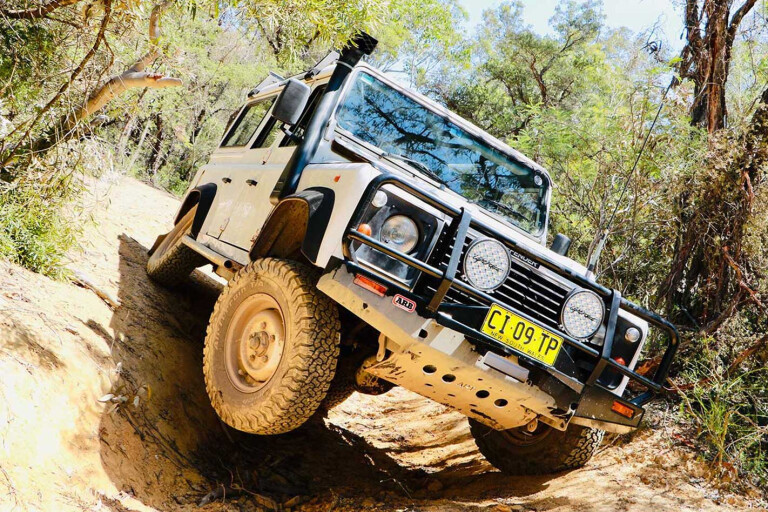
A MATE of mine (Matt) has owned a Discovery 3 for about a year, so I was surprised when I bumped into him at a pre-Christmas barbecue to find out he’d yet to take it off-road. We planned to resolve the issue with a run through Meryla State Forest sometime early in the New Year.
My brother-in-law Josh, who’s a Southern Highlands local, decided he’d tag along in his Navara, and so it was that we met up one warm morning in January just past Moss Vale for a day in the scrub.
But I’m getting ahead of myself...
More Money

AS I MENTIONED in the last ‘In The Shed’ update, the Defender had a leaking injector pump and, as my wife was getting sick of the slippery diesel stain on the driveway, I decided to book it in with my local diesel specialist for a pump rebuild. After they’d worked their magic on it, the rebuilt injector pump looked like new, and my wallet was significantly lighter as a result. Who would have known owning an old Land Rover could be so expensive, eh?
Since the pump was rebuilt the Defender has been running like a dream, which isn’t really surprising considering all the other items that have been fixed or replaced over the past couple of years, but I’d much rather spend money on preventative maintenance than repairs, so I shouldn’t complain.
Still, the more I spend fixing stuff the less money I have to spend on new accessories like a winch and rock sliders, which are both still on my wish list. I did, however, manage to find the funds to buy a cheap drawer to bolt in the cargo area, alongside which I’ve fashioned a homemade shelf with a lift-up lid.
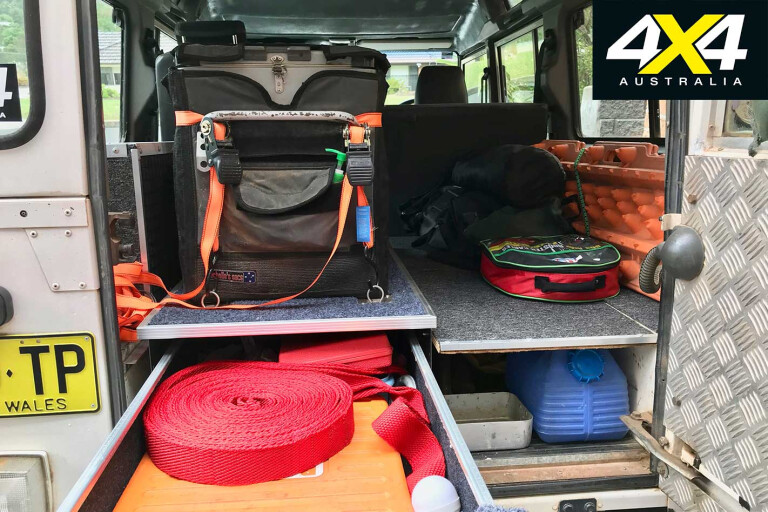
Being able to secure stuff in the back is obviously quite important and I also like to stow gear where I can find it, and with the new setup I know where everything is and can easily access it.
The Drive
THE LAST time I went for a drive in Meryla SF I was on my Pat Malone, and as many of the tracks now have huge muddy ruts in them, I wasn’t too keen on testing their depth.
This time, however, with recovery tracks and snatch strap packed, and two other vehicles along for the drive, I felt much more confident I’d make it through any unforeseen sticky situations.
We started off at the base of a small climb just off the side of Meryla Road called Patons Clearing. After dropping tyre pressures I jumped in the Discovery 3 to see what 4x4 hardware it was armed with, and then suggested Matt raise the air suspension, select low range and opt for the Terrain Response system’s Rock Climb mode.

I jumped back in my Defender, locked the centre diff, grabbed low first, locked the rear Air Locker and started the climb. Ultimately all three vehicles made it to the top with ease, so we pushed deeper into the forest towards Gunrock Creek Fire Trail.
There’s a rocky climb on Gunrock Creek Fire Trail with an alternate ‘chicken’ route. The Defender made the climb easily enough, albeit with both air lockers engaged, while Matt and Josh wisely opted to take the easier track.
We then peeled off onto Gunrock Falls Fire Trail, which appropriately heads down to Gunrock Creek. There’s a great water hole here and an impressive waterfall, but despite some local rain in the preceding days there wasn’t much in the way of water flow and the creek looked almost stagnant.
With the exit on the other side of the creek in poor condition, we backtracked to Meryla Road and followed it south to where the forest borders Morton National Park and the Ettrema Wilderness Area.
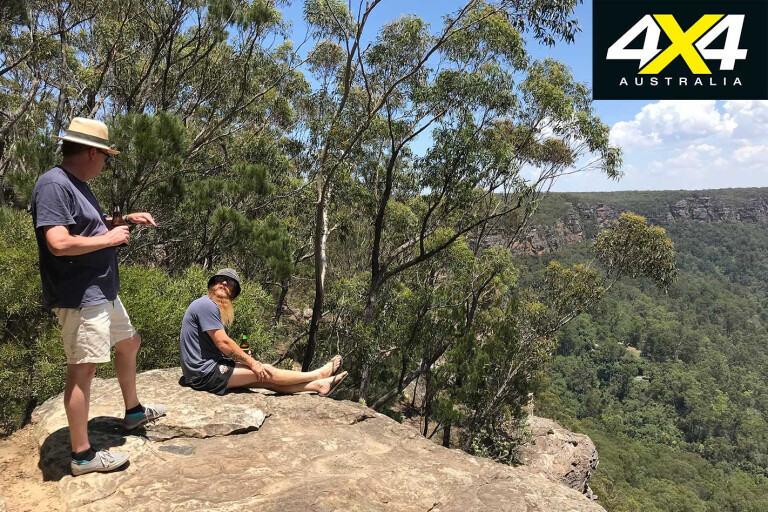
Several years ago there were no locked gates here so you could drive to the end of Wombat Hill Lookout Trail, but unfortunately this is now known as Morton Trig Walking Track. There was also a time you could drive down Griffins Fire Trail to a fantastic camping area below the escarpment, however, this too has now been closed to 4x4s and bikes.
We headed back to the north and then turned left onto Patons Fire Trail, which has some seriously deep washouts due to inappropriate use in wet conditions. We had to meander around various ‘chicken’ routes, in and out of the trees, backing and filling, to eventually reach the end of this track, but our reward was a spectacular view looking down the escarpment to Bundanoon Creek and an icy cold pale ale I’d earlier packed into the Engel.
Exit Strategy
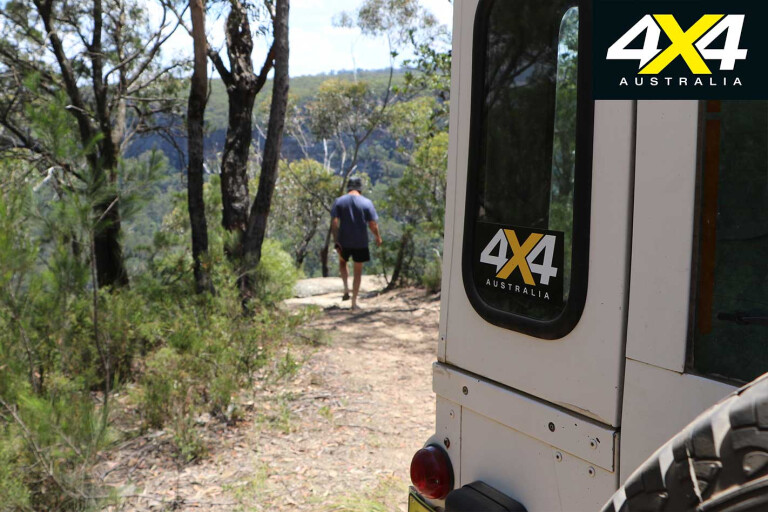
THE DRIVE back out along Patons Fire Trail was much quicker than the way in, because we knew which holes we could drive through and which we’d have to drive around.
Back out on Meryla Road we reinflated tyres, discussed the day’s drive (which was more technically challenging than novice Matt expected) and planned our next one-day escape. We’d all had a great day and all the vehicles came out unscathed.
As I pointed the Defender back down the Illawarra Highway towards home, I had a grin from ear to ear. Yep, it’s safe to say that I love nothing better than being in my happy place.
4x4 Shed Log 3: 1994 Land Rover Defender 300TDI
Total Mileage: 242,800km
Mileage this month: 3300km
Average fuel consumption: 10.2L/100km
Update 5: Hot Stuff
More travels, more repairs.

THE ADVANTAGE of having two toys in the shed is that when one doesn’t start you can drive the other one. Having said this, my Defender has never let me down (knock on wood) but it does seem to spend an inordinate amount of time in workshops having bits and pieces repaired or replaced, so it’s lucky I have my ever-reliable Series IIA shorty to get around in when I need it.
Of course, constant maintenance is one of the tradeoffs of owning an older vehicle instead of a newer one. And while it might cost a fair bit of dough to keep the ol’ Defender on the road, it’s still more affordable than the repayments would be on a new 4x4 wagon.
So, what are the latest Landy trials and tribulations? You may recall I recently spent a wad of cash having the injector pump overhauled. Once this was sorted the lift pump started leaking, so this was replaced at the next service interval. Everything went well for the next couple of months, but then I noticed the temperature gauge climbing towards the red zone on a freeway run to Marulan. I backed off and it dropped back down, but whenever I tried to nudge it up to the 110km/h mark the temperature gauge would correspondingly nudge its way up to the red mark.

It was at Marulan that I got to drive the Defender on a racetrack, using it to ferry photographer Phil Cooper around the Pheasant Wood circuit for 4X4 Australia’s mud-terrain tyre test. This was bloody great fun, but, suffice to say, I won’t be entering the Defender into a race anytime soon.
The next big drive was up to Coffs Harbour for the 4X4 Australia advertiser’s weekend, and on the freeway drive north the temp gauge also headed north. I subjected the Defender to two solid days of pretty gnarly off-road driving in the Coffs hinterland, and this proved no problem for the cooling system at all.
In fact, I had an absolute ball, with the Defender’s long-travel suspension, front and rear air lockers, great low-range gearing and pre-dinged panels combining to make light work of the tricky tracks. But when I jumped back on the freeway for the drive south, the faded and bent temp needle continued heading the other way.
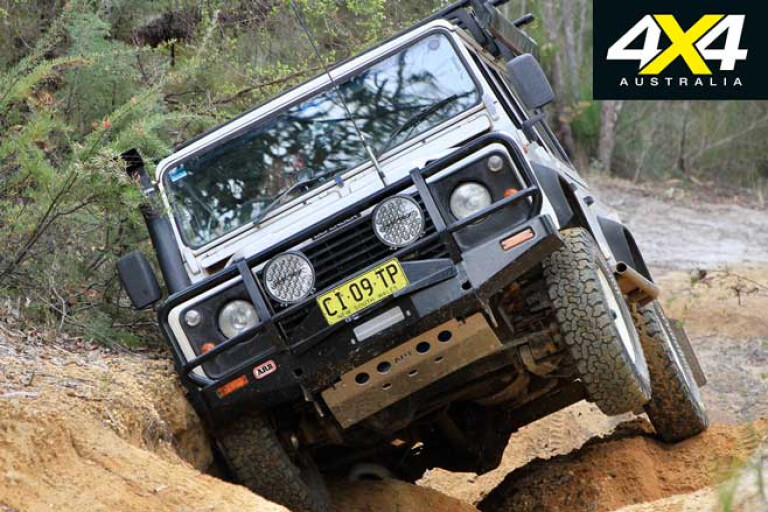
The boys at Roving Mechanical have since upgraded the tired-looking cooling system, fitting a new copper radiator, a new viscous fan, a new thermostat, and even a new temperature gauge. The result? Nothing much has changed. The next port of call will be to check the vehicle’s earth which, if poor, can mess around with the accuracy of the temperature gauge.
Of course, a head gasket could be the culprit, too, but there’s no coolant loss and no telltale cloudy engine-oil signs. I hope it’s just the earth; I’m not in the mood to spend more money on the Defender right now, because it could prove my old vehicle/new vehicle expenditure comparison to be a falsehood.
On a more positive note, I picked up a Defender cargo barrier the other day for 20 bucks! Winning.
4x4 Shed Log 5: 1994 Land Rover Defender 300TDI
Total Mileage: 250,163km
Mileage this month: 4363km
Average fuel consumption: 10.2L/100km

COMMENTS